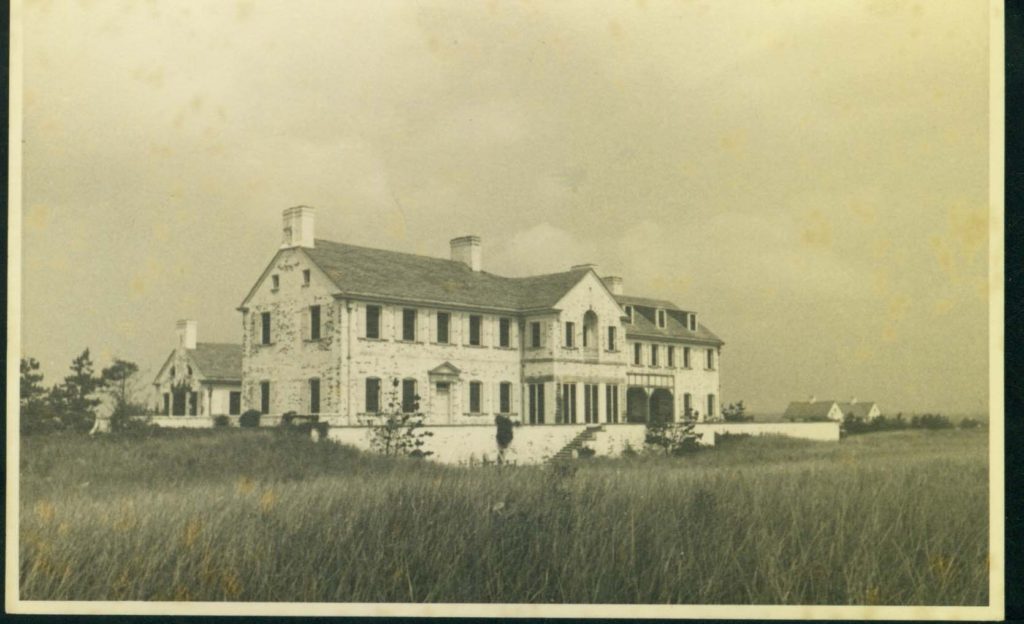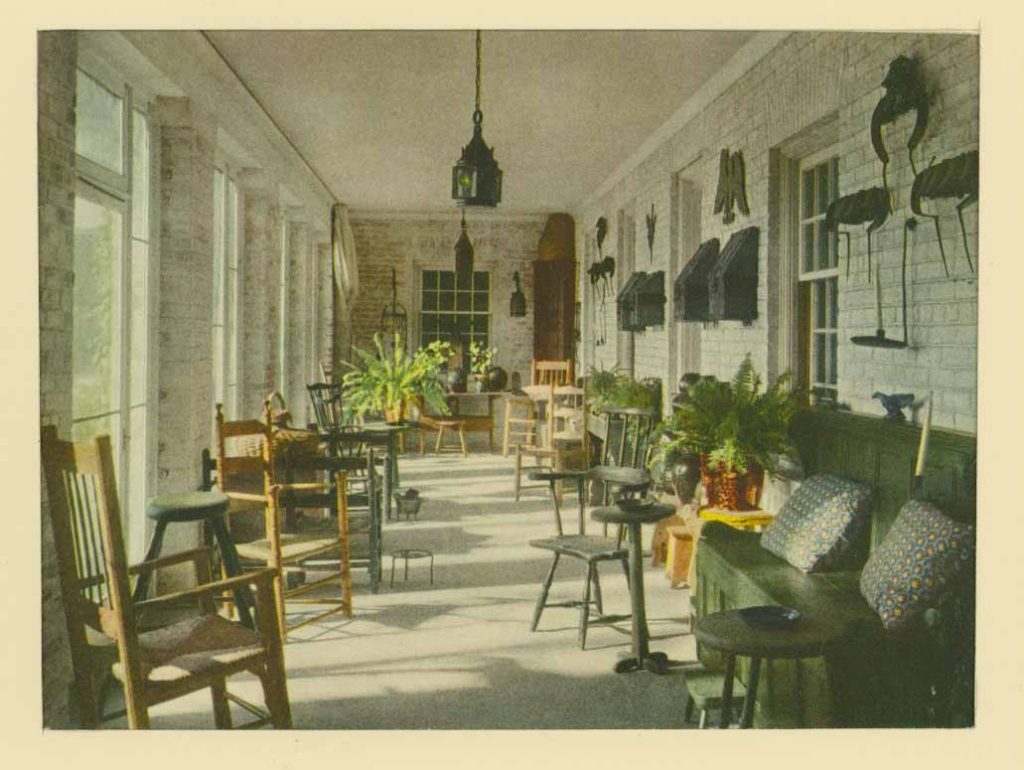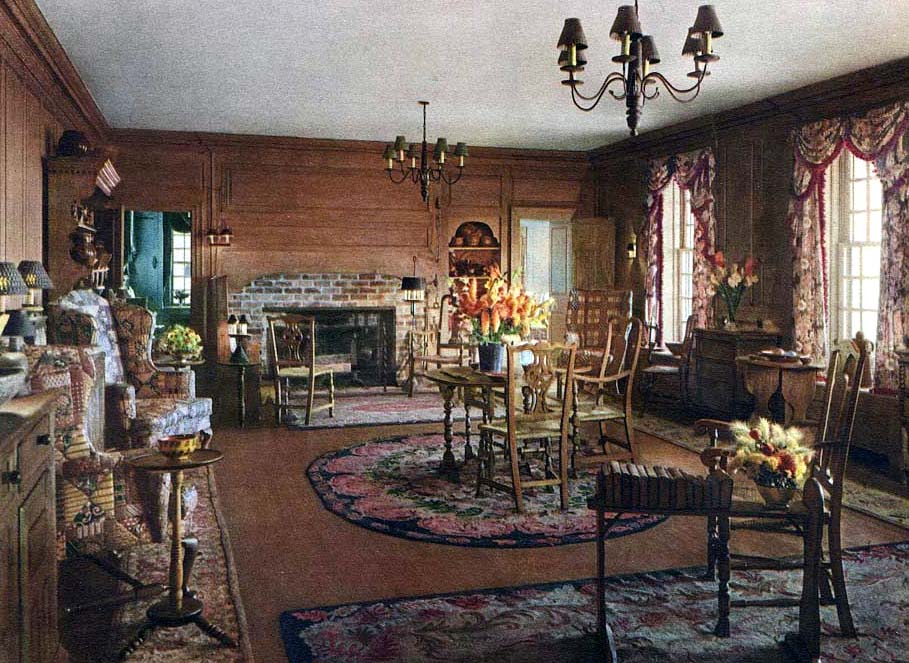It’s 1919, and you have a one-year-old daughter. Delaware summers can be oppressive, and in the days before widespread air conditioning, there is not much relief. Where do you go to escape the heat? This was the decision faced by Henry Francis and Ruth du Pont.
They had many options—the beach, the mountains, or a European trip. People in their social circle tended to congregate in familiar places with family and friends. At times, it was as if the elite of a city was transported en masse to these summer retreats.
The extended du Pont family had no single destination, but Rehoboth Beach, the Chesapeake, Maine, and Fishers Island in New York all had their devotees. H. F. and Ruth du Pont made a different choice—Southampton on Long Island. Winterthur may have produced the happiest moments and memories for H. F., but for Ruth it was Southampton, where she had summered as a girl at her grandfather’s and uncle’s shingle-style houses with wide porches and green lawns. So in 1919, H. F. du Pont and family joined the summer colony there, renting a house for the season. In 1924 they decided to build and bought a choice piece of land along the dunes of recently opened Meadow Lane, situated between the bay and the ocean.
Having been inspired to collect American antiques on a visit to his friend Electra Havemeyer Webb at Shelburne in Vermont the previous year, H. F. was set on an American-style house. He picked the firm of Cross & Cross of New York, the architects who designed Webb’s “Brick House.” Woodwork purchased by du Pont in 1925 from an eighteenth-century house in Chestertown, Maryland, inspired the name of his new summer residence. Henry Davis Sleeper helped to create the interiors while Marian Coffin created the landscape. H. F. du Pont never did things in a small or lackadaisical way. Every detail, every piece of furniture, each window treatment, was carefully chosen with regard for color, symmetry, and overall effect.



On August 4, 1926, the du Ponts moved into their new summer house. With fifty rooms, including nine bedrooms and eleven full bathrooms, Chestertown House was not your typical seaside home. Photos of the interiors and the terraced lawn looking out to the Atlantic seem completely in keeping with H. F.’s style, taking into consideration Ruth’s desire for a less-formal house than Winterthur.
Photos of the rooms show they are similar to many other summer houses of the du Pont’s social set. Less high-style furniture and ceramics and more simple pieces of pine or maple, hooked rugs, ship models, quilts, brightly colored ceramics, and pewter. It has often been said that Chestertown was H. F.’s incubator house, where he first experimented with decorating with American objects and an innovative use of color. It became the foundation for Winterthur, and he even considered that someday it might also be a museum. But in 1931, after the major expansion of Winterthur, H. F. began to move some pieces to his Delaware house and eventually, even elements of historic architecture. Now Chestertown was more of a family home—Ruth’s place to get away and relax with her daughters and then grandchildren.

What became of Chestertown House? Despite a brief consideration of selling it in 1933 as the Depression weighed heavily on family finances, they decided to keep it. The house meant summer to several generations of this branch of the du Pont family. With H. F.’s death in 1969, some objects came to Winterthur, many went to his daughters, and others were sold.
The fate of the house thereafter is a fascinating tale. After brief notoriety when it was owned in the 1980s by Baby Jane Holzer, a member of Andy Warhol’s inner-circle, it mutated into Dragon’s Head, a turreted castle complete with a basement shark tank. Obviously, the new owner had a rather different idea than H. F. about what made an attractive summer house. Stripped of most of its historic interiors, it continued to change under subsequent ownership and renaming and eventually was called Elysium.
Fashion designer Calvin Klein purchased the property in 2003 and had Elysium demolished in 2009. He built a new house on the site—a sleek, white modern structure that overlooked the dunes. Some of the few intact elements of historic paneling were removed before the demolition, and an architect working in traditional styles incorporated them into a new house. In 2020, Klein sold the house and land where the du Pont family summer house once sat—then and now a choice piece of property on Meadow Lane—to an unknown buyer for $84 million.